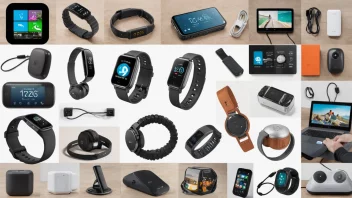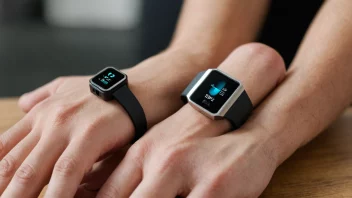Wearable devices have revolutionized the way athletes and fitness enthusiasts monitor their performance and health metrics. These gadgets, ranging from smartwatches to fitness trackers, provide valuable insights that can help improve training routines, enhance performance, and prevent injuries. In this article, we answer some common questions about how wearable technology is utilized in sports performance tracking.
What types of wearable devices are used in sports performance tracking?
There are various types of wearable devices commonly used in sports, including:
- Fitness Trackers: These devices monitor daily activities like steps taken, calories burned, and sleep quality.
- Smartwatches: Equipped with advanced health and fitness features, smartwatches often have GPS, heart rate monitoring, and workout tracking.
- Heart Rate Monitors: These devices specifically focus on tracking heart rate and intensity during workouts, helping athletes optimize performance.
- Smart Clothing: Some apparel incorporates sensors to monitor muscle activity, posture, and other performance metrics.
- GPS Devices: Used mainly in endurance sports, these devices track distance, pace, and route, providing detailed GPS data.
How do wearable devices track sports performance?
Wearable devices use a combination of sensors and technology to track various metrics. Common methods include:
- Accelerometers: These sensors measure movement and acceleration, helping track steps, speed, and activity intensity.
- Heart Rate Sensors: Optical or electrical sensors monitor heart rate in real-time, providing insights into exertion levels.
- GPS Technology: GPS-enabled devices track location, distance, and speed during outdoor activities.
- Gyroscopes: These sensors measure orientation and angular velocity, useful for tracking complex movements in sports.
What metrics can athletes track with wearables?
A range of metrics can be tracked, including:
- Heart Rate: Monitor resting and active heart rates to gauge fitness levels.
- Calories Burned: Estimate energy expenditure during workouts.
- Distance Covered: Track how far an athlete has run, cycled, or swum.
- Pace: Measure speed during activities to improve performance.
- Sleep Quality: Analyze sleep patterns to ensure adequate recovery.
Can wearable devices help prevent injuries?
Yes, wearable devices can play a significant role in injury prevention by:
- Monitoring Strain: Devices can track workload and intensity, helping athletes avoid overtraining.
- Identifying Patterns: By analyzing data over time, athletes can identify trends that may lead to injuries.
- Encouraging Recovery: Wearables can remind athletes to rest based on their activity levels.
How can athletes use the data collected from wearables?
Athletes can utilize the data in several ways:
- Setting Goals: Data can help establish realistic and measurable fitness goals.
- Tracking Progress: Athletes can monitor their improvements over time and adjust training accordingly.
- Making Informed Decisions: Analyzing performance metrics allows athletes to make better training and recovery decisions.
Are there any downsides to using wearable devices in sports?
While wearable devices offer numerous benefits, there are some downsides to consider:
- Data Overload: Athletes may become overwhelmed by the amount of data collected and struggle to interpret it.
- Accuracy Issues: Some devices may not provide accurate readings, leading to misleading conclusions.
- Cost: High-quality wearables can be expensive, which may be a barrier for some individuals.
In conclusion, wearable devices have become an essential tool for athletes looking to improve their performance and overall health. By providing real-time data and insights, these gadgets empower users to track their progress, prevent injuries, and make informed decisions about their training routines. As technology continues to advance, the potential for wearables in sports performance tracking will only grow, paving the way for a new era of athletic excellence.






